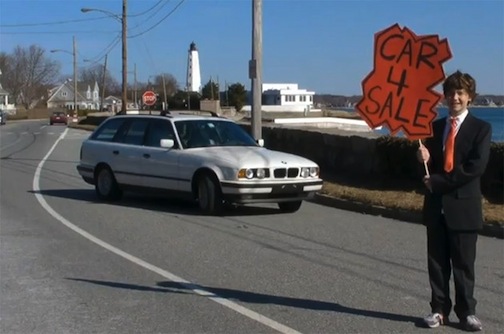How to Expose Hidden Problems in Used Cars
Posted on Sep 7, 2023 in Safety | 2 comments

People trying to sell used cars can be downright desperate to unload their driveway-bound sheet metal in order to pocket some quick cash. While scams or intentionally deceptive sales tactics from sellers aren’t particularly common, they do happen.
More often, instead of trying to hide problems, sellers simply don’t mention them. When I, for example, was selling a 2002 Honda CR-V, I was quick to point out my stellar fuel economy while conveniently forgetting to mention that I hadn’t yet replaced the worn front brake pads. Deceptive? I don’t think so. I’d rather call it “maximizing profit potential.”
That’s exactly why used-car shoppers need to be exceptionally careful when buying. With that in mind, here are some hints and advice for anyone hoping to take the plunge and bring home a problem-free used car.
Obviously, unless you are buying a certified used car from a dealer, you’ll need to have a mechanic thoroughly check out the ride you’re considering. Before you pay for that professional diagnosis, though, there are signs that can tip you off about the true condition of a car.
Let’s begin with the interior:
Excessive wear and tear on the inside of a car can indicate severe neglect elsewhere in the vehicle. Before you even check the odometer, guess how many miles the car has on it based on the condition of the seats and carpets (and be sure to look under the floor mats!). If you guess 50,000 miles and the car actually has 100,000, buy it! If you guess 175,000 and it has 50,000, run.
After gauging the initial interior quality, take a look down south and inspect the brake pedal. If it looks worn beyond what seems acceptable for the car’s mileage, you have a red flag that the car has seen a lifetime of stop-and-go driving (or worse, racing) and could signal deeper brake system problems or even engine neglect.
When you inspect the exterior, look beyond the tire tread and take a close look at the body panels. Make sure all panels are the exact same color and nothing has been repainted. Make sure all gaps are equal. Look closely at molding, trim, and lights, as any paint on those should raise your suspicion that body work has been done at some point on the vehicle.
If the interior and exterior look good and you proceed to the test drive, turn the radio off and listen for audible clues from the car.
Do you hear:
A clunk coming from behind you when you put the car in drive? That could be a sign of bad U-joints.
Clicking from the front end while the car is under acceleration or turning? Check the CV joints, they may need replacing.
Clicking or ticking coming from the engine that increases with engine speed? This could signal significant engine problems. Stop your test drive now, head home, visit CarGurus’ DealFinder, and find another car!





Look under the car and check the rear end to see if either have oil or grease on them doesnt hurt,I bought a car that I wasnt aware had a rear main leak and well good news is the frame was nice and rust free because the oil covered it…
…or just dont buy a Ford